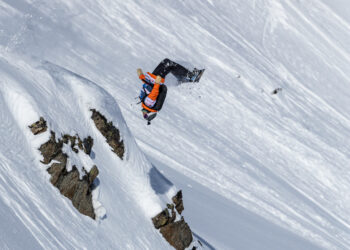
Scott Talbott is—and has been—in a difficult spot. The way that politics work in his state, he is disincentivized to act on what the science is telling him.
The director of the Wyoming Game and Fish Department was sitting on an elevated stage at a theater in downtown Bozeman on Aug. 27, attending a media summit hosted by the Theodore Roosevelt Conservation Partnership.
The topic: deadly chronic wasting disease.
CWD is the always fatal plague—a cousin to dreaded mad cow disease—that strikes members of the deer family, including mule deer and whitetails, elk and moose. Its pathogen is a misshapen protein called a prion that turns brain tissue into the equivalent of swiss cheese.
Talbott was among a panel of wildlife experts discussing CWD’s alarming progression which now has reached 25 U.S. states and three Canadian provinces. It was confirmed in Montana a year ago.
While there has not been a documented case of a human getting sick and dying from eating a CWD-infected animal, the possibility exists, and it was not discounted by experts gathered in Bozeman. Yet even without any cases of CWD crossing the species barrier and posing a threat to human health, fears about potentially devastating impacts on wild ungulates are significant.
Because of its imminent arrival in the heart of the Greater Yellowstone Ecosystem, CWD is on the verge of making national headlines in a way that it hasn’t before. Any day, the disease is expected to strike the National Elk Refuge or in any of 22 elk feedgrounds operated by the state of Wyoming.
In Bozeman, the call to action from scientists working on prion diseases was crystal clear.
Wyoming’s Talbott was not in the hot seat per se, but he’s feeling heat. As a professional public servant with three decades of experience, he answers to the governor, members of the politically appointed Wyoming Game and Fish Commission, and to laws put on the books by the state legislature. Within Wyoming, many lawmakers still appear to be in denial about CWD.
On the other hand, Talbott knows what the science says.
The overwhelming consensus from professional scientific bodies specializing in wildlife management and infectious diseases is that it’s a bad idea—and tremendously risky—to bunch together thousands of animals around artificial feeding stations created by humans.
Yet that’s exactly the real-world scenario that exists today in western Wyoming on the National Elk Refuge and state-run feedgrounds.
CWD is slow moving but believed to be population-limiting, if not population-devastating. Infectious prions are shed into the environment so even if casualties are removed from the place they died and then incinerated, they still leave contaminated particles in the environment through urine, feces, saliva and decomposition of bodily fluids that remain for a decade or longer.
Experts said that it’s almost impossible to decontaminate vast areas of landscape once they become CWD hotspots, meaning they represent zones of possible continuous ongoing transmission of disease to healthy animals.
Further, what happens on the elk refuge and feedgrounds does not stay there. Animals move, and CWD-infected elk, mule deer and whitetails migrate over long distances and disperse CWD across a wider geography.
This means, for example, that elk wintering on a Wyoming feedground could carry disease into the central elk mixing zone in Yellowstone National Park, putting them in contact with other herds and thousands of elk arriving from Idaho and Montana.
When asked about Wyoming continuing to operate feedgrounds in the face of expert opinion decrying them, Talbott acknowledged the contradiction. Wyoming Game and Fish, he said, will soon embark on a new public outreach program to help educate citizens about CWD and experiments are underway to limit feeding and decrease elk densities, he said.
When CWD strikes Greater Yellowstone’s herds, alarm bells will sound, public land managers will be forced to act, but the question is: what action? That invariably will be accompanied by citizen finger pointing at the state of Wyoming, the U.S. Fish and Wildlife Service and other federal agencies allowing feedgrounds to operate.
A number of panelists at the Theodore Roosevelt Conservation Partnership summit noted that another devastating consequence of CWD is the impact it’s already had on the credibility of natural resource managers who are responsible for upholding the public trust.
Right now, no one can predict what the arrival of CWD means for Greater Yellowstone and its nationally treasured wildlife. The only certainty is this: if it turns out badly, it won’t be just agencies that will be held to account, but also the people who are—and were—making the decisions.
Todd Wilkinson is founder of Bozeman-based Mountain Journal (mountainjournal.org) and a correspondent for National Geographic. He also is author of “Grizzlies of Pilgrim Creek” about famous Jackson Hole grizzly bear 399 featuring 150 photographs by Tom Mangelsen, available only at mangelsen.com/grizzly.











